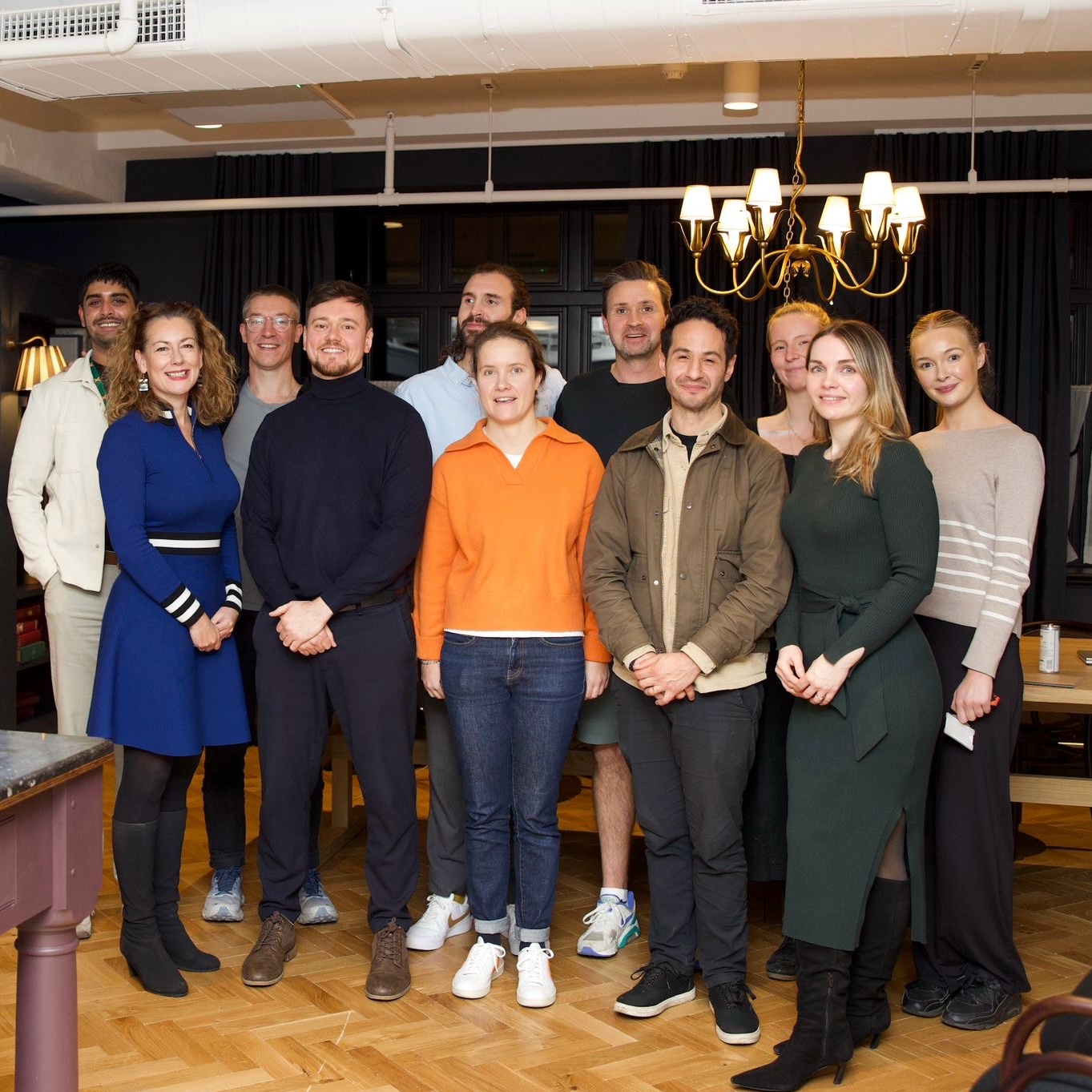Whereas strategy adopts an almost military-like precision in its game plan, entrepreneurship seeks to tweak, tinker, pivot and experiment continuously. Adopting a middle road approach allows firms and individuals alike, to balance polarities in a way that synergises direct and emergent forces, culminating in a realised plan. Strategy without entrepreneurship is central planning, but entrepreneurship without strategy leads to chaos.
Best of Both Worlds: Integrating the Bottom-up Approach of Lean Start-ups with the Top-down Orientation of Strategic Management, for Purposeful Innovation
{{divider}}
Whereas strategy adopts an almost military-like precision in its game plan, entrepreneurship seeks to tweak, tinker, pivot and experiment continuously. Adopting a middle road approach allows firms and individuals alike, to balance polarities in a way that synergises direct and emergent forces, culminating in a realised plan. Strategy without entrepreneurship is central planning, but entrepreneurship without strategy leads to chaos.
{{divider}}
Strategic Experimentation
{{divider}}
Many entrepreneurs shy away from committing to a rigid strategy, for fear that it will stifle flexibility and creativity, however defining the boundaries within which innovation and experimentation should take place, is important in ensuring forward movement. Similarly, many firms that want to encourage innovation, fail to realise that many corporate tools such as multiple horizon planning can actually undermine it, by being too focused on an unrealised outcome, at the expense of the process.
{{divider}}
A lean strategy guards against both rigid planning and unrestrained experimentation. Developed by David Collis, adjunct Professor of Business Administration at Harvard Business School, such a framework fans the flames of creativity, without letting them burn the house down. And for creatives pursuing opportunity under the constrains of limited time, money and resources, a strategy that ensures the wise-deployment of such limited assets will see them through the desert without running out of water.
{{divider}}
This is as much about figuring out what not to do, as what to do. In a resource constrained environment, this comes down to understanding how to balance both opportunities and trade-offs, given that most decisions will be mutually exclusive. Every path will create a unique outcome with its own unforeseen implications and changing circumstances - both within the firm, and the competitive landscape.
{{divider}}
Trials and Tribulations
{{divider}}
Many SMEs go through an initial phase of testing the market. Agility and adaptability lubricate rapid testing, allowing for the fine-tuning of offerings to fit a fluctuating market, however this doesn’t always ensure scalability or longevity. Tesla’s lithium ion batteries would never have gotten off the ground had they been expected to demonstrate immediate success, even Elon Musk had to go through a few failures to get to proof of concept before successfully receiving investment in Space X.
{{divider}}
First and foremost, a successful strategy must articulate the firms overall direction, by identifying an opportunity that distinguishes quick returns from enduring success. Tools such as Porter’s 5 Forces analysis can help sort the wheat from the chaff where this is concerned. A live trial period is then most useful for identifying the market, especially in emerging industries with little data, getting feedback, and exploring the borders of opportunity.
{{divider}}
Less is More
{{divider}}
Keeping your eyes on the prize and narrowing the focus helps you to deploy assets without becoming distracted and spreading yourself too thin. Nasty Gal is an example of a company that diversified too quickly, eroding company culture and image, and eventually leading to bankruptcy and collapse. Starting low and going slow can build strong foundations that hone in on quality over quantity, and ensure long-term robustness.
{{divider}}
In a similar manner, new ventures, driven by the need to generate cash to meet payroll, often respond to every sales inquiry, even when the customer is not in the target set. This can come at the expense of brand and traction. Over time, trimming the fringes and becoming eagle eyed about what’s working and what’s not can help to re-invigorate growth.
{{divider}}
Company culture helps to align teams, even in an increasingly remote world. It empowers employees, while avoiding conflicting interests and serves as a set of guiding principles for both firm and people alike. Culture and values are what form the basis of vision and inspiration, reminding all involved of the ultimate purpose or raison d’etre. For example, Ben & Jerry’s strive to “make the world’s best ice cream, to pursue progressive social change, and to provide fair compensation to employees and shareholders alike.”
{{divider}}
Objective, Scope and Advantage
{{divider}}
A simple direct strategy can be boiled down to three basic principles - namely the what, who, how. Thinking about the ultimate objective asks you to redefine what success means to you. Do you want to scale up to market dominance? Or create a self-sustaining entity in a suitable niche? What metrics will be used to measure progress, and how can this be forecasted over a given timeline. With an IPO, for instance, the metrics might include X million new customers, a Y% share of online retail, version 3.0 installed at Z key customers
{{divider}}
The scope of the business identifies the business you are in. For example, instead of competing head to head with other major players, you may seek out the underserved segments in-between. Disruptive Schumpeterian technologies always create new space for Kirznerian opportunists.
{{divider}}
Lastly, your competitive advantage is your distinctive difference. It satisfies an underlying customer need and directly meets a target pain point. The opportunities and trade offs balanced at this stage require strong customer relationships and communication.
{{divider}}
Planning for Plan B
{{divider}}
In an uncertain world, the only certainty is that the plan will not go to plan. This is why it’s important to balance both direct and emergent opportunities in order to achieve a realised outcome. It is here that the notion of strategy as a filter looms large. In considering what experiments to undertake, people throughout an organisation develop and test hypotheses about how to improve the strategic positioning by identifying current mismatches, gaps, or opportunities in the offering’s fit with the market.
{{divider}}
This is almost like an entrepreneurship within the entrepreneurship, as it were. Intrapreneurs in the form of frontline service personnel are best placed to identify pain points that may otherwise be going unnoticed. Once an innovation is introduced, the strategic screen again comes into play. The venture now has to evaluate the outcome of the experiment and decide whether to end, continue, or amend it - all of which will have lasting repercussions. Strategy is what provides the framework for interpreting the results of market feedback in a companies on-going evolution.
{{divider}}
Like a science experiment, it asks organisers to dig down into the depths of things and figure out which hypotheses have been proven or disproven, and whether the evidence and methods are sufficient. In response to environmental changes and the findings of experiments, the venture builds new internal capabilities and, if necessary, revises the original deliberate strategy - before beginning all over again. It’s about being flexible enough to adjust to a changing market place, while being strategic enough to consistently identify and deliver against the best long-term opportunities.
{{divider}}
Shifting Perspectives
{{divider}}
This kind of adaptation takes two main shifts in its evolution - the physical and the perspective. While navigating the landscape and evaluating data, the organisation is consistently shifting between the micro and the macro, in order to gather information about what to do next, decisions which are then reflected in the physical implementations and changes made to the companies goals and structure.
{{divider}}
It is not the strongest of the species that survives, nor the most intelligent, but the one most responsive to change - Charles Darwin
{{divider}}





.png)
.avif)


.avif)


.avif)
.avif)



